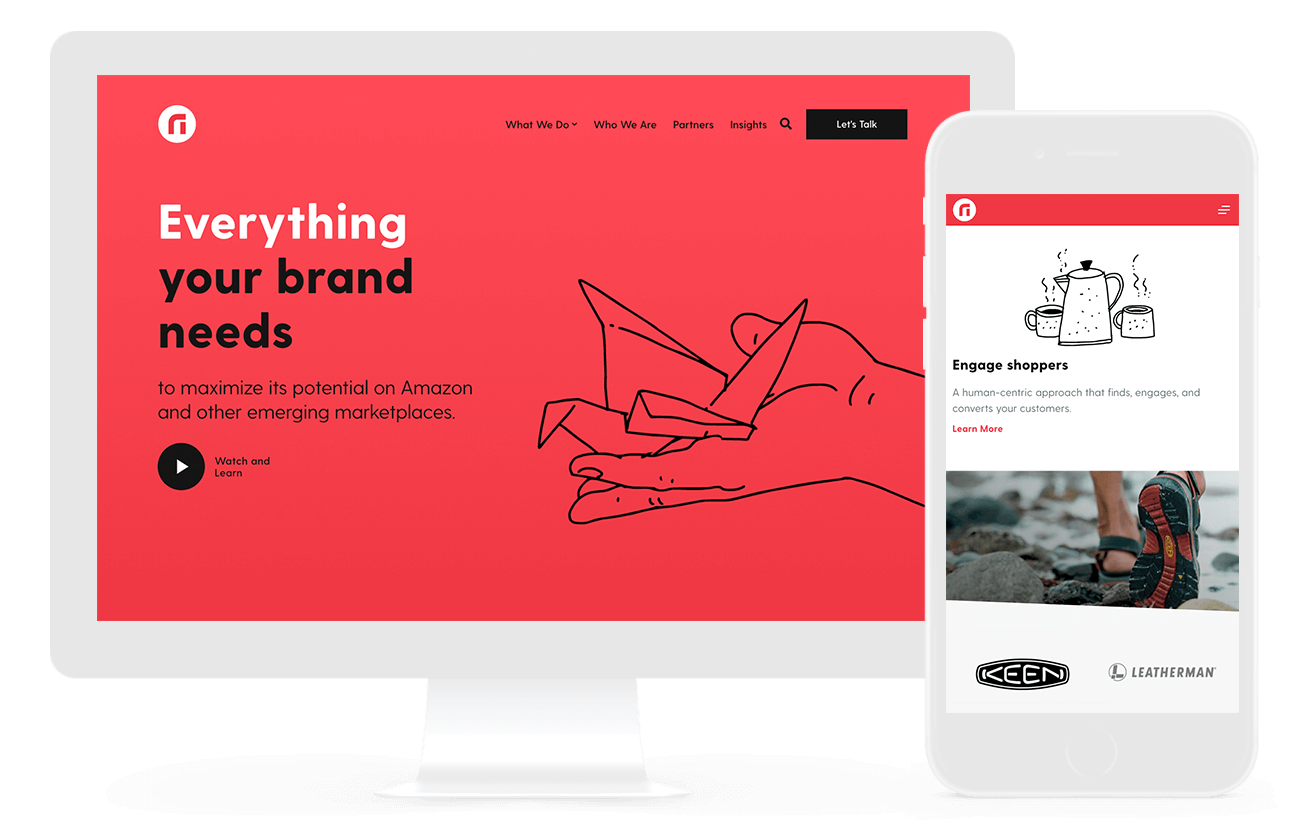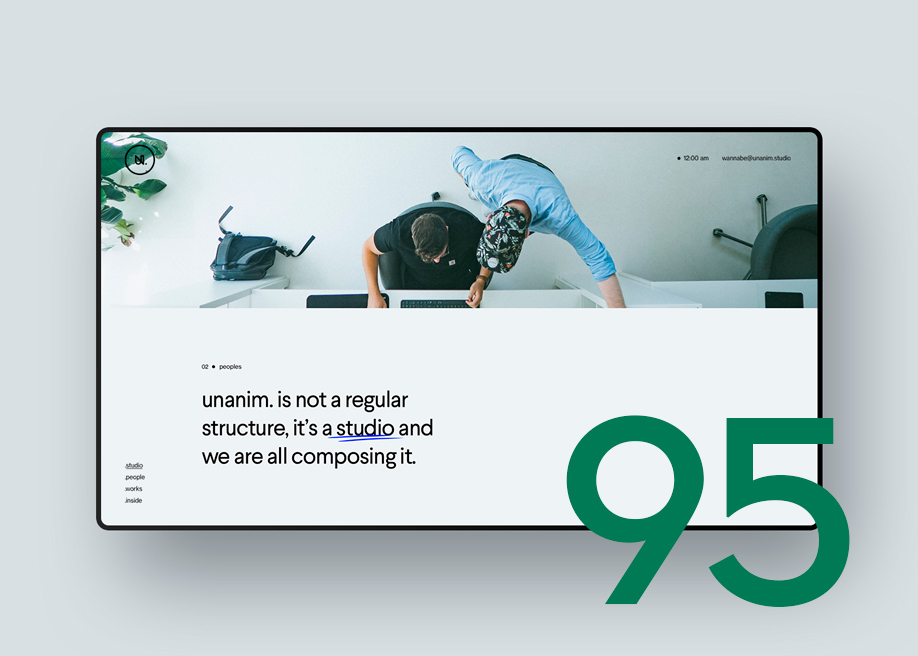All Categories
Featured
Table of Contents
- – Top Web Design Companies - Find Web Designers ...
- – Otc Web Design Girdwood, Alaska - Web Design ...
- – The Leader In Website Design – Squarespace Ti...
- – Web Design Museum 1991 – 2006 Tips and Tricks:
- – Web Design Vs. Web Development - Upwork Tips ...
- – Trajectory: Atlanta Web Design Company Tips a...
- – Web Design And Development - Invision Tips a...
- – What Does A Web Designer Do? - Careerexplore...
- – Web Page Design: A Comprehensive Guide - Ado...
- – Pueblo Web Design Tips and Tricks:
- – Web Design - Entrepreneur Tips and Tricks:
Top Web Design Companies - Find Web Designers Here Tips and Tricks:
Quick summary Functionality and the utility, not the visual style, figure out the success or failure of a site. Because the visitor of the page is the only person who clicks the mouse and therefore decides everything, user-centric style has actually developed as a basic approach for successful and profit-oriented web design - web design frederick md.
and the energy, not the visual style, figure out the success or failure of a website. Considering that the visitor of the page is the only person who clicks the mouse and therefore decides whatever, user-centric style has actually become a standard method for successful and profit-oriented website design. After all, if users can't use a function, it might as well not exist.
g. where the search box ought to be positioned) as it has actually already been done in a number of articles; rather we concentrate on the approaches which, used appropriately, can cause more sophisticated style decisions and streamline the procedure of viewing provided info. Please see that you may be interested in the usability-related articles we have actually released before: Concepts Of Good Website Design And Effective Web Style Guidelines, In order to utilize the principles appropriately we first need to understand how users interact with websites, how they believe and what are the standard patterns of users' habits.
Otc Web Design Girdwood, Alaska - Web Design & Google ... Tips and Tricks:
Visitors glance at each new page, scan some of the text, and click on the very first link that catches their interest or vaguely resembles the thing they're looking for. There are big parts of the page they don't even look at. A lot of users look for something intriguing (or useful) and clickable; as quickly as some appealing candidates are discovered, users click.
If a page offers users with premium material, they want to jeopardize the content with advertisements and the design of the website. This is the reason that not-that-well-designed websites with premium material get a great deal of traffic over years. Material is more crucial than the design which supports it.

Users do not read, they scan. Notice how "hot" locations abrupt in the middle of sentences. This is normal for the scanning process. Extremely simple concept: If a website isn't able to satisfy users' expectations, then designer failed to get his job done appropriately and the company loses cash. The higher is the cognitive load and the less instinctive is the navigation, the more willing are users to leave the site and search for alternatives.
The Leader In Website Design – Squarespace Tips and Tricks:
Neither do they scan website in a direct style, going sequentially from one website section to another one. Rather users satisfice; they pick the very first reasonable choice. As quickly as they discover a link that seems like it may cause the goal, there is a great chance that it will be instantly clicked.
It does not matter to us if we understand how things work, as long as we can utilize them. If your audience is going to imitate you're designing billboard, then design great signboards." Users wish to have the ability to manage their web browser and depend on the consistent data discussion throughout the site.
If the navigation and website architecture aren't intuitive, the variety of enigma grows and makes it harder for users to understand how the system works and how to receive from point A to point B. A clear structure, moderate visual clues and quickly recognizable links can help users to find their path to their aim.
Web Design Museum 1991 – 2006 Tips and Tricks:

claims to be "beyond channels, beyond products, beyond distribution". What does it suggest? Given that users tend to check out sites according to the "F"-pattern, these three statements would be the first components users will see on the page once it is packed. Although the design itself is simple and instinctive, to comprehend what the page has to do with the user requires to search for the answer.
Once you've attained this, you can communicate why the system works and how users can gain from it. People won't utilize your web website if they can't find their method around it. 2. Do Not Misuse Users' Perseverance, In every project when you are going to provide your visitors some service or tool, attempt to keep your user requirements minimal.
Newbie visitors want to, not filling long web kinds for an account they might never use in the future. Let users check out the site and find your services without forcing them into sharing personal data. It's not reasonable to require users to get in an e-mail address to test the function.
Web Design Vs. Web Development - Upwork Tips and Tricks:
Stikkit is a best example for an easy to use service which needs almost absolutely nothing from the visitor which is inconspicuous and reassuring. Which's what you desire your users to feel on your web site. Obviously, Mite requires more. The registration can be done in less than 30 seconds as the kind has horizontal orientation, the user doesn't even need to scroll the page.
A user registration alone is adequate of an impediment to user navigation to cut down on inbound traffic. Manage To Focus Users' Attention, As websites supply both fixed and dynamic material, some aspects of the user interface draw in attention more than others do.
Focusing users' attention to particular locations of the site with a moderate usage of visual components can help your visitors to receive from point A to point B without thinking about how it really is supposed to be done. The less enigma visitors have, the they have and the more trust they can develop towards the business the website represents.
Trajectory: Atlanta Web Design Company Tips and Tricks:
4. Pursue Feature Direct exposure, Modern website design are generally slammed due to their method of directing users with visually appealing 1-2-3-done-steps, large buttons with visual results and so on. But from the style point of view these elements in fact aren't a bad thing. On the contrary, such as they lead the visitors through the site content in an extremely basic and user-friendly way.
The website has 9 main navigation options which are visible at the very first glimpse. The choice of colors may be too light. is an essential principle of effective interface style. It does not truly matter how this is attained. What matters is that the material is well-understood and visitors feel comfy with the way they interact with the system.
Instead a rate: simply what visitors are looking for. An optimal service for efficient writing is touse short and concise phrases (come to the point as rapidly as possible), use scannable layout (classify the content, use several heading levels, use visual elements and bulleted lists which break the flow of uniform text blocks), usage plain and unbiased language (a promo doesn't need to sound like ad; provide your users some reasonable and unbiased factor why they need to utilize your service or stay on your website)6.
Web Design And Development - Invision Tips and Tricks:
Users are seldom on a website to delight in the design; in addition, in many cases they are trying to find the information despite the design - web design frederick md. Pursue simplicity instead of complexity. From the visitors' viewpoint, the very best site design is a pure text, with no advertisements or more content obstructs matching exactly the question visitors used or the content they've been looking for.
Finch plainly presents the info about the site and provides visitors a choice of alternatives without overcrowding them with unnecessary material. Not only does it assist to for the visitors, but it makes it possible to perceive the information presented on the screen.
Complex structures are more difficult to read, scan, examine and deal with. If you have the option between separating two design segments by a visible line or by some whitespace, it's normally much better to use the whitespace option. (Simon's Law): the much better you handle to supply users with a sense of visual hierarchy, the simpler your content will be to view.
What Does A Web Designer Do? - Careerexplorer Tips and Tricks:
The same conventions and guidelines should be applied to all elements.: do the most with the least quantity of cues and visual components. Clarity: all elements need to be developed so their significance is not ambiguous.
Conventions Are Our Buddies, Conventional style of site aspects does not result in a boring web site. As they minimize the learning curve, the requirement to figure out how things work. For example, it would be a functionality headache if all sites had different visual discussion of RSS-feeds. That's not that different from our routine life where we tend to get used to fundamental concepts of how we organize data (folders) or do shopping (positioning of products).
comprehend what they're anticipating from a website navigation, text structure, search positioning etc. A case in point from use sessions is to equate the page in Japanese (presuming your web users don't know Japanese, e. g. with Babelfish) and supply your functionality testers with a job to discover something in the page of different language.
Web Page Design: A Comprehensive Guide - Adobe Xd Ideas Tips and Tricks:
Steve Krug suggests that it's much better to, however make the most of conventions when you do not. 10. Test Early, Test Often, This so-called TETO-principle ought to be used to every web style job as use tests often provide into substantial issues and issues related to a provided design. Test not too late, not insufficient and not for the incorrect reasons.
Some important indicate remember: according to Steve Krug, and testing one user early in the task is much better than testing 50 near the end. Accoring to Boehm's very first law, errors are most regular throughout requirements and style activities and are the more expensive the later they are gotten rid of.
That implies that you create something, test it, fix it and after that check it once again. There might be problems which have not been discovered during the first round as users were practically obstructed by other problems. use tests. Either you'll be indicated the problems you have or you'll be indicated the absence of significant design flaws which remains in both cases a beneficial insight for your task.
Pueblo Web Design Tips and Tricks:
This holds for designers too. After you have actually worked on a site for few weeks, you can't observe it from a fresh viewpoint anymore. You know how it is built and therefore you know precisely how it works you have the knowledge independent testers and visitors of your site would not have.
It can be connected to other areas such as graphic design, user experience, and multimedia arts, however is more aptly seen from a technological perspective. It has become a big part of individuals's daily lives. It is difficult to envision the Web without animated graphics, different designs of typography, background, videos and music.

During 1991 to 1993 the World Wide Web was born. Text-only pages might be seen using an easy line-mode internet browser. There had been no integrated technique to graphic design elements such as images or sounds.
Web Design - Entrepreneur Tips and Tricks:
The W3C was created in October 1994 to "lead the Web to its complete potential by developing common protocols that promote its development and ensure its interoperability." This discouraged any one company from monopolizing a propriety web browser and programs language, which might have changed the impact of the Web as a whole.
As this has actually happened the innovation of the web has actually also carried on. There have also been significant modifications in the way people utilize and access the web, and this has actually changed how websites are created. Considering that the end of the browsers wars [] new web browsers have actually been released. Numerous of these are open source indicating that they tend to have much faster advancement and are more supportive of brand-new requirements.
Learn more about Lovell Media Group LLC or TrainACETable of Contents
- – Top Web Design Companies - Find Web Designers ...
- – Otc Web Design Girdwood, Alaska - Web Design ...
- – The Leader In Website Design – Squarespace Ti...
- – Web Design Museum 1991 – 2006 Tips and Tricks:
- – Web Design Vs. Web Development - Upwork Tips ...
- – Trajectory: Atlanta Web Design Company Tips a...
- – Web Design And Development - Invision Tips a...
- – What Does A Web Designer Do? - Careerexplore...
- – Web Page Design: A Comprehensive Guide - Ado...
- – Pueblo Web Design Tips and Tricks:
- – Web Design - Entrepreneur Tips and Tricks:
Latest Posts
Web Design Museum 1991 – 2006 Tips and Tricks:
Basics Of Web Development & Coding Specialization - Coursera Tips and Tricks:
Web Page Design: A Comprehensive Guide - Adobe Xd Ideas Tips and Tricks:
More
Latest Posts
Web Design Museum 1991 – 2006 Tips and Tricks:
Basics Of Web Development & Coding Specialization - Coursera Tips and Tricks:
Web Page Design: A Comprehensive Guide - Adobe Xd Ideas Tips and Tricks: